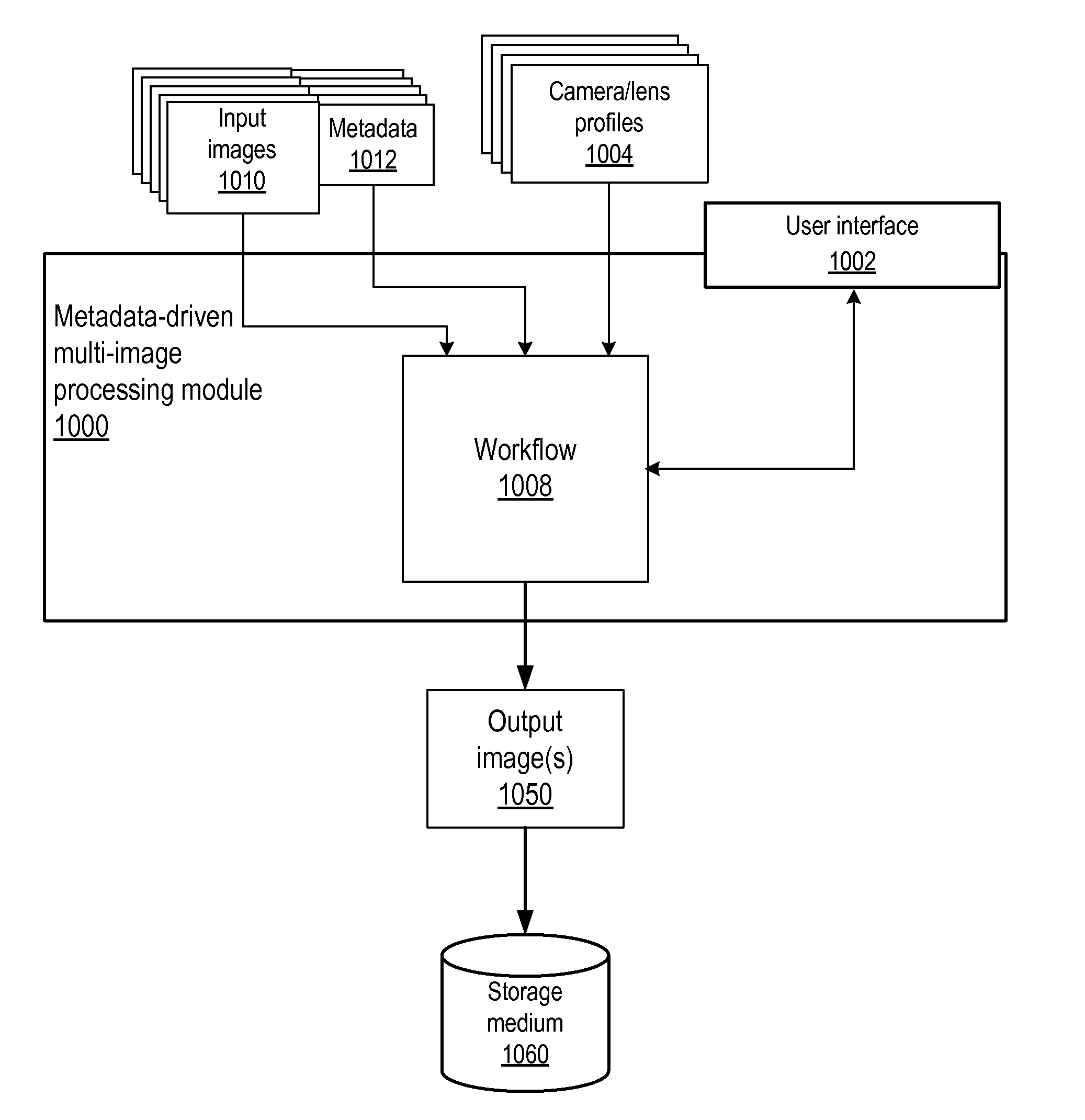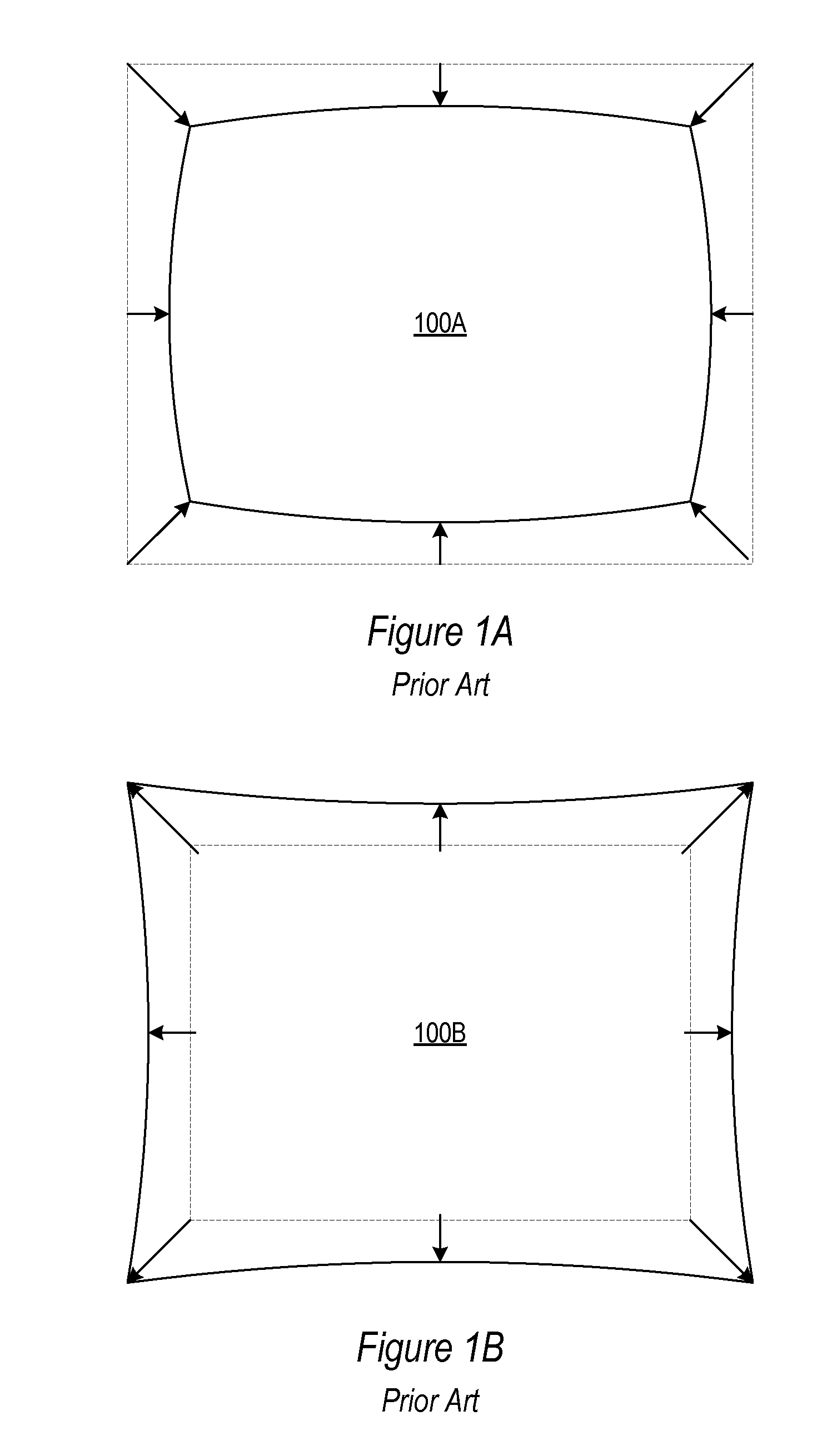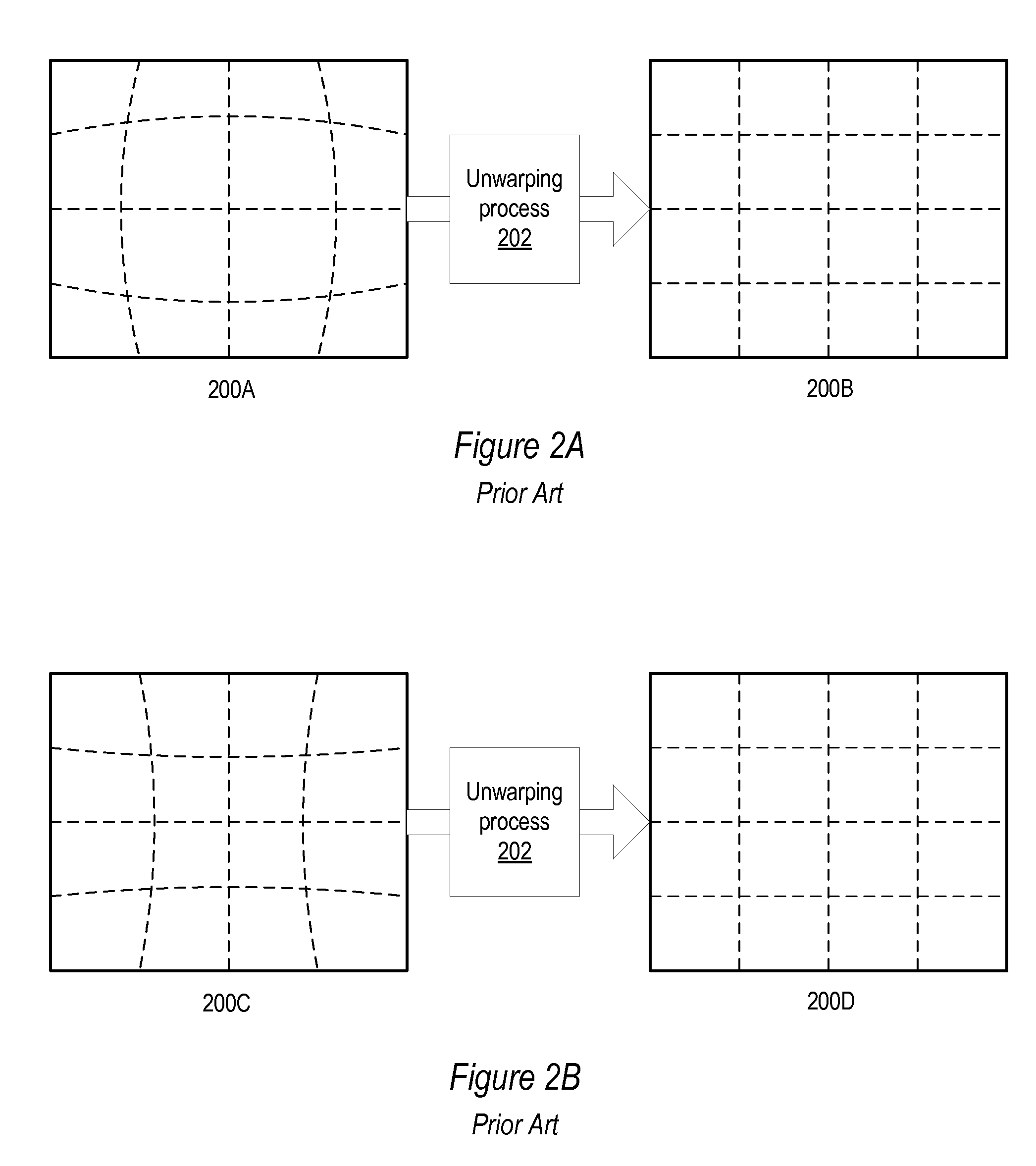Metadata-Driven Method and Apparatus for Multi-Image Processing
a multi-image processing and data-driven technology, applied in the field of multi-image processing, can solve the problems of limiting the field of view of the camera to be captured as one image, the capture of more complex composite images may be too large to achieve as one image, and the quality of the image cannot be compromised, etc., to achieve the effect of high dynamic rang
- Summary
- Abstract
- Description
- Claims
- Application Information
AI Technical Summary
Benefits of technology
Problems solved by technology
Method used
Image
Examples
Embodiment Construction
[0056]Various embodiments of methods and apparatus for metadata-driven processing of multiple images are described. In embodiments, metadata from an input set of images may be used in directing and / or automating a multi-image processing workflow. The metadata may be used, for example, in sorting the set of input images into two or more categories, or buckets, in making decisions or recommendations as to a particular workflow process that may be appropriate for the set of images or for one or more subsets of the set of images, in determining particular tasks or steps to perform or not perform on the set of images during a workflow process, in selecting information such as correction models to be applied to the set of images during a workflow process, and so on.
[0057]In embodiments, the metadata for an image may be accessed to determine, for example, what particular lens and / or camera the image was taken with and conditions under which the image was captured (e.g., focal length, focal...
PUM
 Login to View More
Login to View More Abstract
Description
Claims
Application Information
 Login to View More
Login to View More - R&D
- Intellectual Property
- Life Sciences
- Materials
- Tech Scout
- Unparalleled Data Quality
- Higher Quality Content
- 60% Fewer Hallucinations
Browse by: Latest US Patents, China's latest patents, Technical Efficacy Thesaurus, Application Domain, Technology Topic, Popular Technical Reports.
© 2025 PatSnap. All rights reserved.Legal|Privacy policy|Modern Slavery Act Transparency Statement|Sitemap|About US| Contact US: help@patsnap.com



